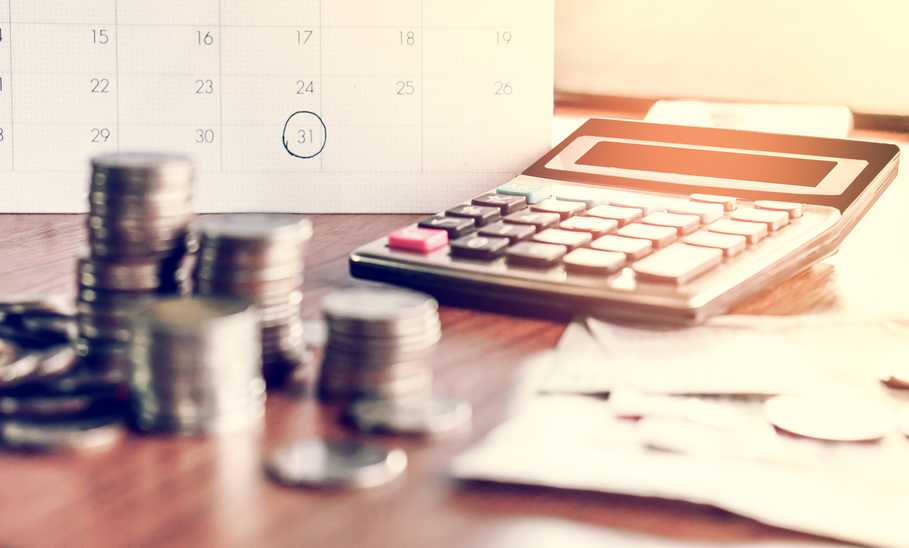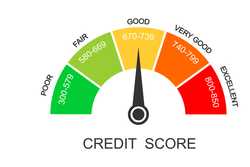Pay Off Debt With These 7 Expert Tips

Our evaluations and opinions are not influenced by our advertising relationships, but we may earn a commission from our partners’ links. This content is created by TIME Stamped, under TIME’s direction and produced in accordance with TIME’s editorial guidelines and overseen by TIME’s editorial staff. Learn more about it.
If you’re in debt, you’re certainly not alone. According to data collated by the New York Federal Reserve, household debt in the U.S. rose by $184 billion to reach $17.69 trillion in the first quarter of 2024.
That includes $12.61 trillion worth of mortgage loans, with the remainder comprised of consumer debts like credit card balances and auto, personal, and student loans.
Fortunately, getting out of debt is attainable, even for those with a lot of debt. It takes hard work and sacrifice, and possibly even professional assistance, but it can be done. Here’s how.
Here are some tried-and-true ways to get out of debt once and for all. Remember that you may end up mixing and matching these approaches or using a few simultaneously. It’s all about crafting a strategy that works for your particular situation. Everyone’s debt is different—and so is their ideal debt repayment plan.
The first step in any debt repayment plan is determining where the debt came from. That means taking a long, hard look at your budget (if you have one) and examining how it compares to your actual spending habits.
You may discover areas of discretionary overspending, like frequent restaurant meals or multiple subscription services, are ratcheting up your credit card balances. Or you might find that your spending habits are fairly disciplined—you just carry a lot of debt from earlier expenses, such as your student or auto loan payments.
You may find places where you can make smaller cuts, or you might see that the problem is more systemic and requires larger life changes (like moving to a less-expensive city, for example).
Either way, tracking your spending (and deciding, by making a budget, where you actually want your money to go) is a key first step toward getting out of debt. It also allows you to list all your debts, along with their respective interest rates and balances. This is key for figuring out the avalanche or snowball debt payoff methods outlined below.
If you want to protect your credit score and avoid late fees, you need to pay the minimum monthly payment on all of your debts. Even a single late payment can have an impact on your credit score. However, you must pay more than the minimum payment to eliminate your debt.
If you have an auto or personal loan, look for an option to pay additional principal rather than simply offering your lender a bigger chunk of interest. The point is to pay off the loan, not to help your lender make more profit.
Strategies like the snowball method—and the avalanche method, which we’ll describe next—can help you pay off your debt more quickly. The snowball method requires you to organize your debts according to their total balances, starting with the lowest.
Here’s an example:
According to the snowball method, you’d start by putting all your available money into Credit Card 1 (regardless of your other balances and interest rates) while still making the minimum payments on each of your other accounts.
The idea is that you’ll get an emotional boost seeing a $0 balance on your easiest-to-pay-off debt. This will motivate you to move on to the next debt on your list, then the next—just like a snowball rolling down a hill.
With the debt avalanche, you’ll tackle the debt with the highest interest rate first, instead of the smallest balance.
Using the same accounts from above, here’s how you’d organize those debts using a debt avalanche:
Although it might take a little more time to pay off Credit Card 2 than Credit Card 1, you’ll pay much less interest once the account is paid off. You can use your extra cash flow to start paying off the next account on the list.
Both the avalanche method and the snowball method can be effective strategies to jump-start debt repayment. The best option depends on which will motivate you more: seeing fast progress (the snowball method) or saving as much as possible on interest (the avalanche method).
Debt consolidation involves paying off all your existing debts with a single loan or line of credit. This way, you only have one monthly payment to worry about. Depending on the loan or line of credit you choose, you may pay less interest too.
The two most common ways to consolidate debt are through a personal loan, which pays you a lump sum upfront which you’ll then use to pay off all your accounts, or a 0% APR credit card that offers balance transfers.
A balance transfer involves transferring the balance owed from a higher-interest credit card to a low or zero-interest credit card. This pauses the interest-accruing process, making reducing the total amount owing easier.
But be careful: The 0% APR is usually only offered for up to 12 months. Once the promotional period expires, the card’s regular interest rate comes into effect.
If you’re confident you can repay your debts within the promotional period, a 0% interest credit card balance transfer might be the best choice. If you need more time, a personal loan, which generally carries lower interest rates than credit cards, could be worth considering.
So many debt-relief strategies require you to spend less. However, finding ways to earn more can also be helpful.
While making more money isn’t always easy, thanks to the rise of the gig economy, there are more options than ever before for starting a side hustle. There are also plenty of ways to make smaller amounts from home, such as scouting out bank account opening bonuses or using a cashback portal when shopping online. None of these are get-rich-quick schemes, but every cent helps. Another option for extra money is to negotiate a raise at work or scout out a different, better-paid position.
Non-profit credit counseling organizations can help you develop a customized debt repayment strategy at low or no cost. However, it’s important to do the research and make sure you know who you’re working with. Not every for-profit debt settlement service has good intentions. Some are looking to profit from a one-off attempt at negotiating with your lenders, which might not be successful.
Getting out of debt isn’t necessarily easy, but it isn’t impossible either. Determine where your debt is coming from, find ways to break those habits for the long term, and choose strategies that help make the repayment process as easy and motivating as possible.
While there are many strategies for paying down debt, three of the most popular are the snowball, avalanche, and debt consolidation methods. Each method allows borrowers to see real progress on a relatively short-term basis, which can help increase motivation and morale in the long term.
Many strategies have been proven to help people pay off debt. For example, the motivating effect of the snowball method, which requires paying off your lowest-total debt first, has propelled many borrowers toward debt-free living with time and persistence. However, for other people, a different strategy may be more suitable. The best way to pay off debt is to find an approach that works best for you.
It can be difficult to pay off five-figure debt totals quickly. One of the best ways to expedite the process is to take out a debt consolidation loan. This will still leave you with another loan of the same amount, hopefully at a lower interest rate. When it comes to sustainable debt repayment, slow and steady is usually the way.
You can avoid turning to a credit counselor or debt relief service by making more than the minimum payment against your accounts and finding ways to free up as much money as possible for this cause. That could mean spending less or finding ways to earn more. The approach is up to you.
The information presented here is created by TIME Stamped and overseen by TIME editorial staff. To learn more, see our About Us page.



